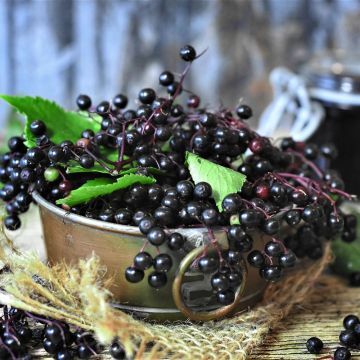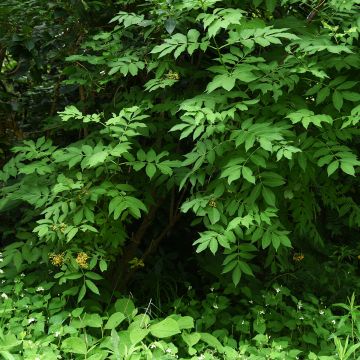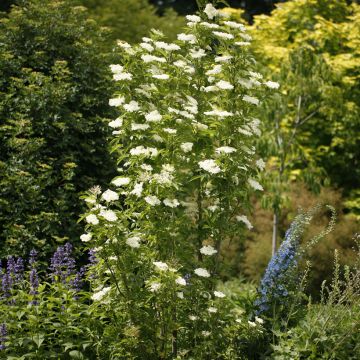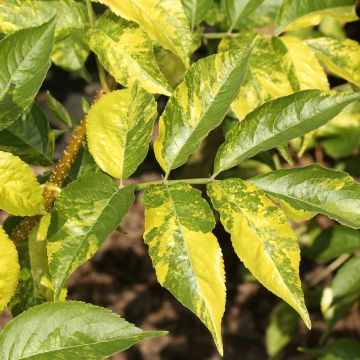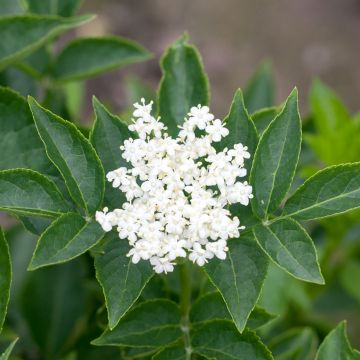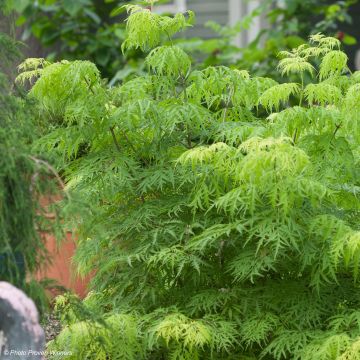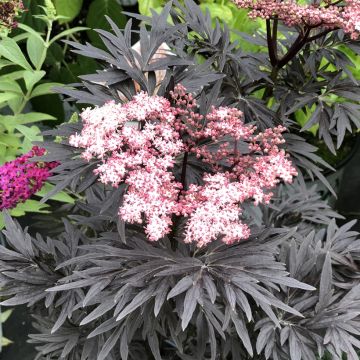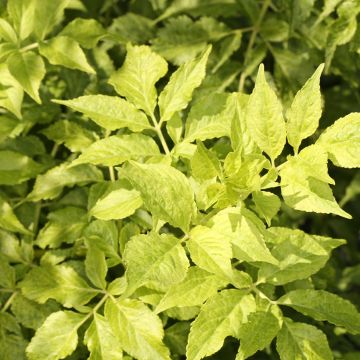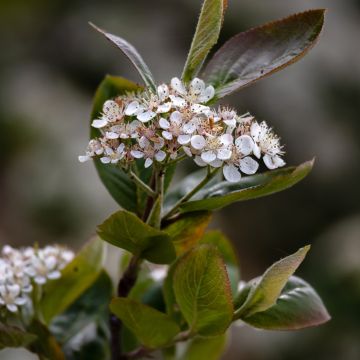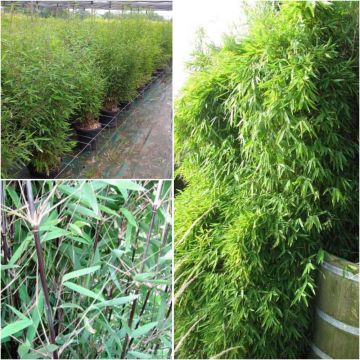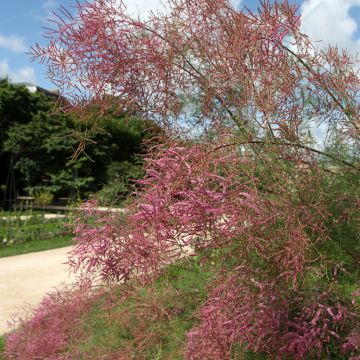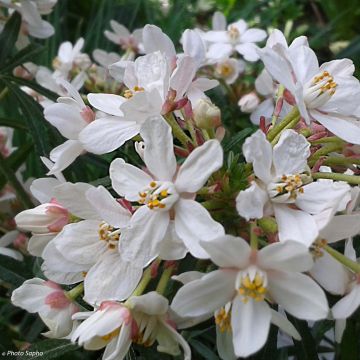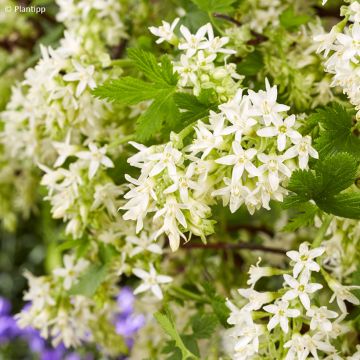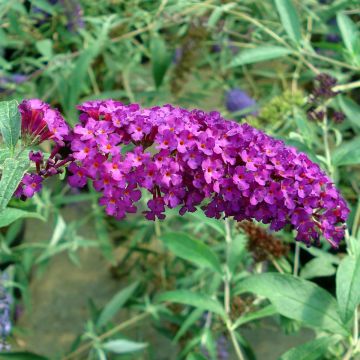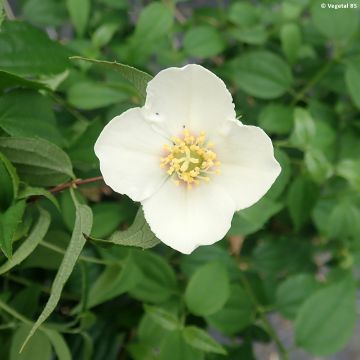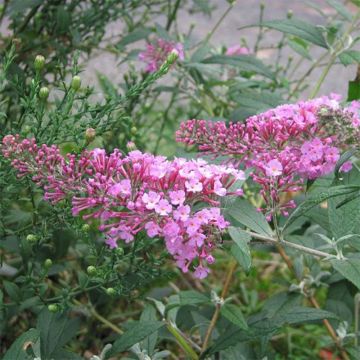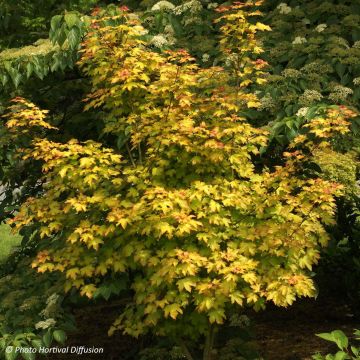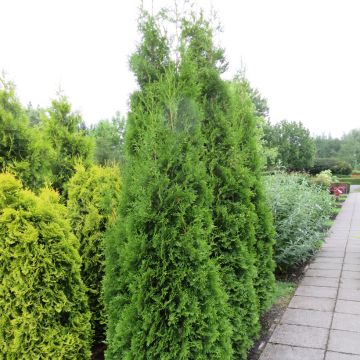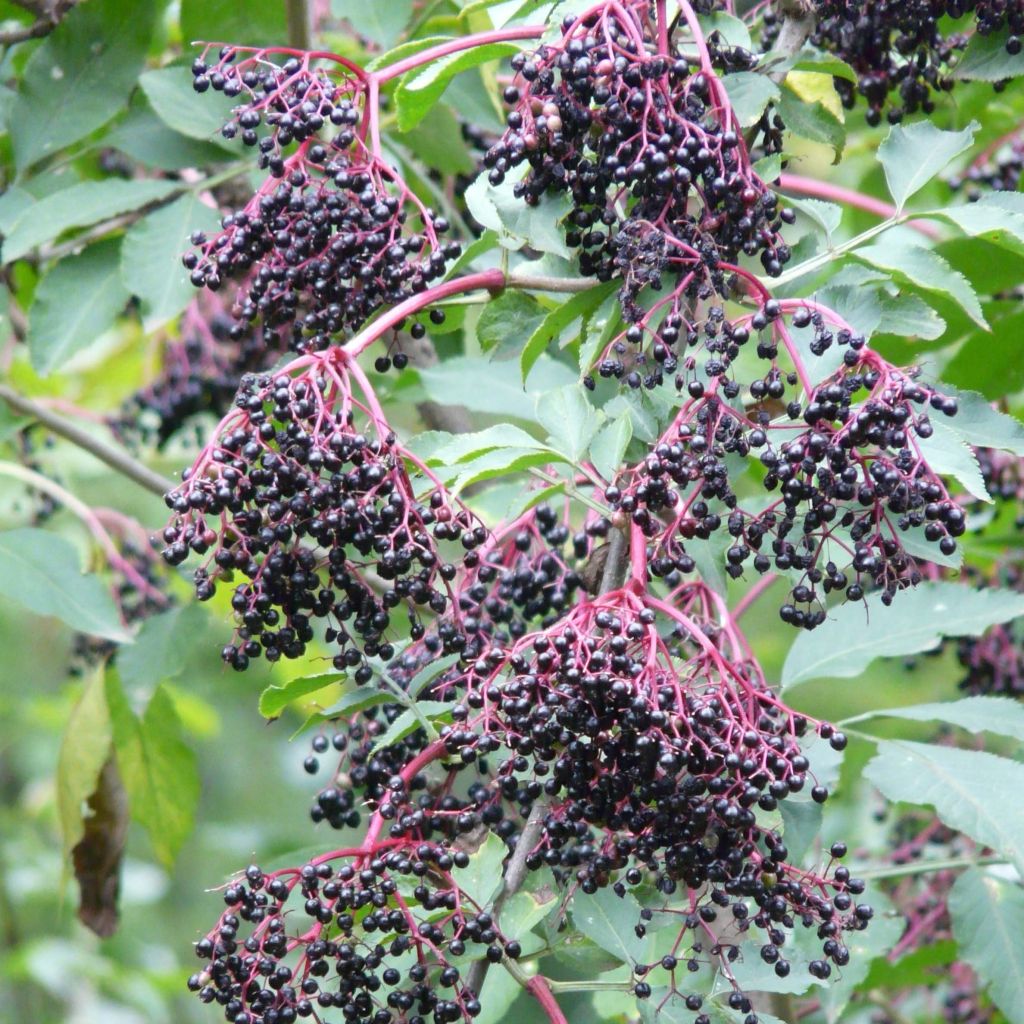

Sambucus nigra Haschberg - Black Elder
Sambucus nigra Haschberg - Black Elder
Sambucus nigra Haschberg
European Elder, Black Elder, Elder, Elderberry, European Elderberry, European black Elderberry
This item cannot be shipped to the selected country
Delivery charge from €5.90
Delivery to Corse prohibited
More information
Delivery charge from €5.90
Delivery to Corse prohibited
More information
Schedule delivery date,
and select date in basket
This plant carries a 6 months recovery warranty
More information
We guarantee the quality of our plants for a full growing cycle, and will replace at our expense any plant that fails to recover under normal climatic and planting conditions.
From €5.90 for pickup delivery and €6.90 for home delivery
Express home delivery from €8.90.
Delivery to Corse prohibited: UE law prohibits the import of this plant from mainland France to Corse as part of the fight against Xylella fastidiosa. Please accept our sincere apologies.
More information
Description
The Haschberg black elderberry (Sambucus nigra) is a variety appreciated for its productivity. It produces small round berries, about 5 mm (1in) in diameter, of black-violet colour at the end of summer. The berries and flowers are edible, provided they are cooked before consumption. The black-violet berries, used alone or combined with other fruits, can be consumed in jams, jellies, syrups or juices, while the flowers can be used in fritters or infusions. The black elderberry is a beautiful bush with rapid growth, easy to cultivate. Ideally planted in autumn for a harvest in September.
'Haschberg' is a productive variety of Austrian origin. The flowers, in the form of white corymbs, appear around the month of May and emit a pleasant fragrance. They are followed by the formation of small violet-black berries, arranged in pendulous clusters. The harvest of this variety takes place around the month of September. It will increase progressively during the first years to become optimal from the fifth year.
The black elderberry is naturally found at the edge of woods, in hedges or thickets - sometimes confused with deadly nightshade, whose berries are toxic. The black elderberry is a beautiful bush with rapid growth, self-fertile, reaching a height of 3 to 5 m (10 to 16ft). Its therapeutic virtues have been known since antiquity. Plant it in a flowerbed, in an informal hedge, or as a solitary specimen. Its tender pithy stems, dense foliage, fragrant flowers, and black berries attract many insects and birds, thus promoting biodiversity in the garden. The black elderberry is a very hardy small tree, with opposite, finely dentate leaves, emitting an unpleasant odour when crushed. Its leaves, although deciduous, are among the first to appear in spring. Add these leaves to your compost to speed up decomposition or make a liquid fertiliser to combat mildew and aphids.
Sambucus nigra Haschberg - Black Elder in pictures
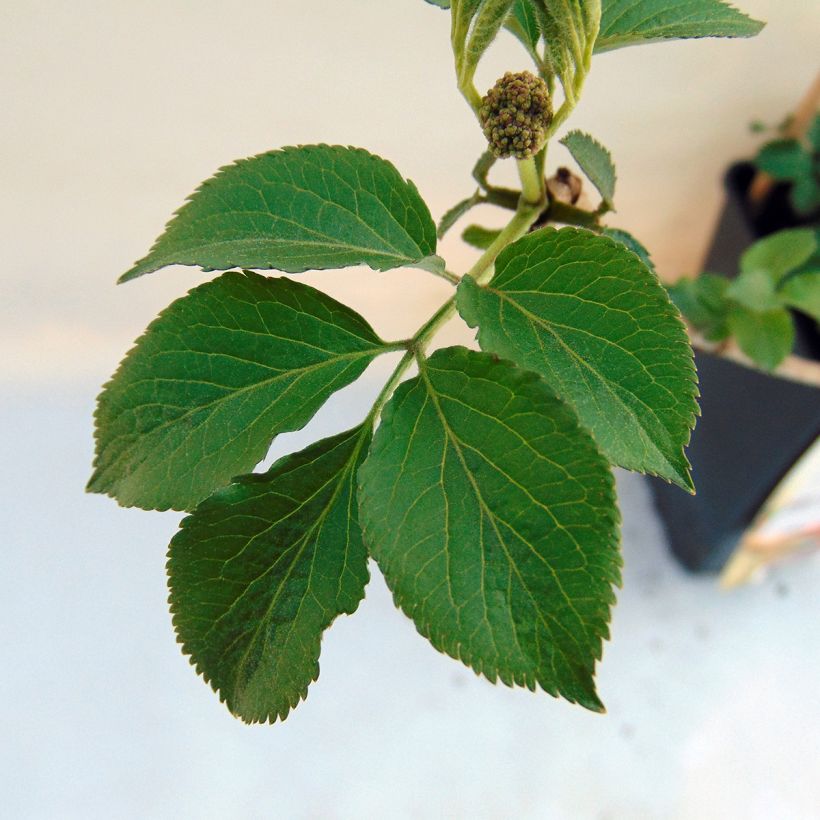

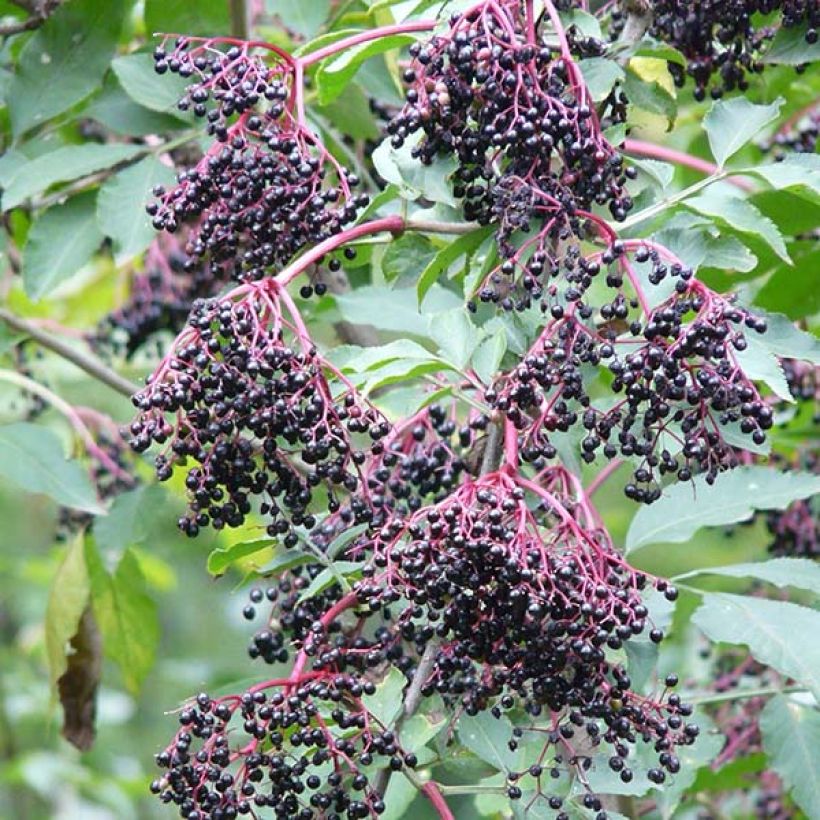

Plant habit
Fruit
Flowering
Foliage
Botanical data
Sambucus
nigra
Haschberg
Adoxaceae
European Elder, Black Elder, Elder, Elderberry, European Elderberry, European black Elderberry
Western Europe
Other Sambucus - Elder tree
Planting and care
The black elderberry is ideally planted in autumn or, failing that, in spring. This bush thrives in all types of soil, preferably moist. Choose a sunny or partially shaded site.
Soak the root ball in water for a few minutes before planting. Dig a wide and deep hole and add compost or potting soil. Insert the root ball and cover with soil.
The black elderberry is not very susceptible to diseases and pests, and does not require any special care. Pruning is not necessary.
Planting period
Intended location
Care
-
, onOrder confirmed
Reply from on Promesse de fleurs
Hedge shrubs
Haven't found what you were looking for?
Hardiness is the lowest winter temperature a plant can endure without suffering serious damage or even dying. However, hardiness is affected by location (a sheltered area, such as a patio), protection (winter cover) and soil type (hardiness is improved by well-drained soil).

Photo Sharing Terms & Conditions
In order to encourage gardeners to interact and share their experiences, Promesse de fleurs offers various media enabling content to be uploaded onto its Site - in particular via the ‘Photo sharing’ module.
The User agrees to refrain from:
- Posting any content that is illegal, prejudicial, insulting, racist, inciteful to hatred, revisionist, contrary to public decency, that infringes on privacy or on the privacy rights of third parties, in particular the publicity rights of persons and goods, intellectual property rights, or the right to privacy.
- Submitting content on behalf of a third party;
- Impersonate the identity of a third party and/or publish any personal information about a third party;
In general, the User undertakes to refrain from any unethical behaviour.
All Content (in particular text, comments, files, images, photos, videos, creative works, etc.), which may be subject to property or intellectual property rights, image or other private rights, shall remain the property of the User, subject to the limited rights granted by the terms of the licence granted by Promesse de fleurs as stated below. Users are at liberty to publish or not to publish such Content on the Site, notably via the ‘Photo Sharing’ facility, and accept that this Content shall be made public and freely accessible, notably on the Internet.
Users further acknowledge, undertake to have ,and guarantee that they hold all necessary rights and permissions to publish such material on the Site, in particular with regard to the legislation in force pertaining to any privacy, property, intellectual property, image, or contractual rights, or rights of any other nature. By publishing such Content on the Site, Users acknowledge accepting full liability as publishers of the Content within the meaning of the law, and grant Promesse de fleurs, free of charge, an inclusive, worldwide licence for the said Content for the entire duration of its publication, including all reproduction, representation, up/downloading, displaying, performing, transmission, and storage rights.
Users also grant permission for their name to be linked to the Content and accept that this link may not always be made available.
By engaging in posting material, Users consent to their Content becoming automatically accessible on the Internet, in particular on other sites and/or blogs and/or web pages of the Promesse de fleurs site, including in particular social pages and the Promesse de fleurs catalogue.
Users may secure the removal of entrusted content free of charge by issuing a simple request via our contact form.

































